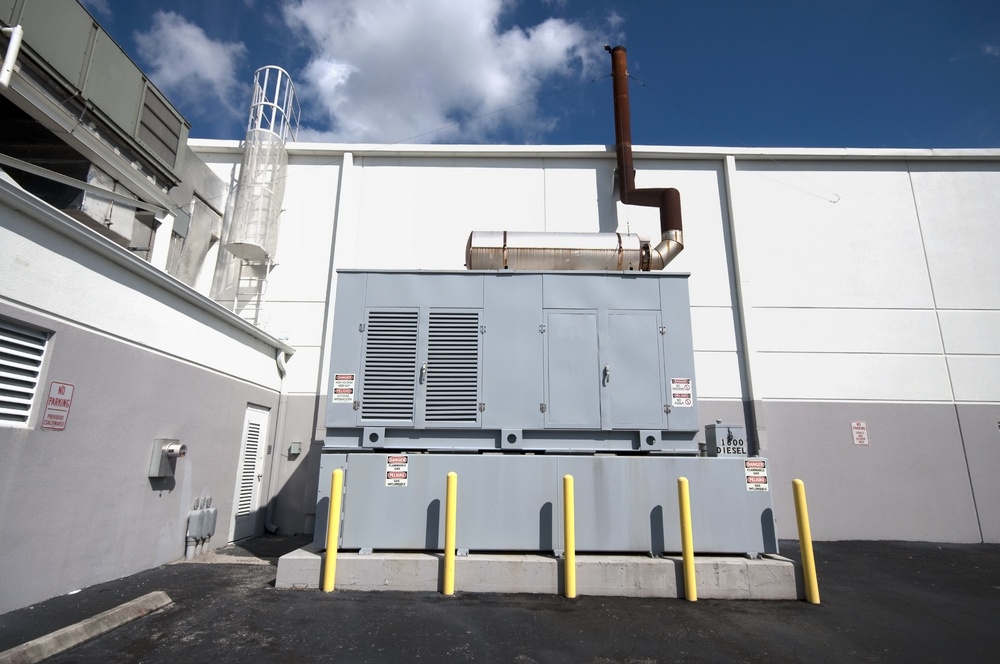When to Specify a Unit-Mounted Load Bank for Your Generator

In today's era where mission-critical infrastructures depend on emergency power systems to act as a backup during power outage, it is imperative that your electrical equipment such as generator set (genset) and UPS systems can function off-the-grid and kick-start seamlessly. If there's no mitigation of power failure, this could cause massive impact in the world's interconnected businesses — starting from the operational interruptions to inevitable loss of profits.
Take the large-scale electrical grid delivering electricity to all end-users in residential, commercial, institutional or industrial applications. Despite how small-scale the affected area may be, sudden or scheduled electrical power failure can transfer in ripple effect, causing a spillover in almost any industry.
Airport terminals with dysfunctional emergency power systems are the top sources of canceled flights and stranded passengers — disrupting businesses which could fully utilize the manpower and equipment at hand. In case of power outage, hospitals also depend on backup power system for vaccine preservation and patients' life support on mechanical ventilators. As a preventive measure on life-and-death situations, it's very critical that this electrical design criteria should be addressed early on in the planning stage.
Given that you have your emergency generator systems in place to kick in when the power goes out, the question herein lies: are they running up to speed? And if so, are they operating at their full maximum capacity? This is when and why you should conduct a load bank testing to gauge if your genset will function in its optimal performance. How regular the load bank testing — annually, semi-annually, quarterly or monthly — will depend on the code requirements, load application, size, capacity, nameplate rating and type of the genset itself.
Test the functionality of your generator through load banks.
What is Generator Load Bank Testing?
Generator load bank testing is an important aspect of preventative maintenance — one that requires a full assessment and examination of the components of your generator under loaded conditions. When there's no recurring power outage in your area, your standby and emergency power systems only run to little or no loads for an extended period of time. However, this is not sufficient as there's no guarantee that your generator will measure up to its full performance capacity when power failure kicks in. Generators become desensitized overtime — and at worst-case scenario if not maintained — can cause fire and safety hazards, high operating costs, and increased emissions.
Look at generator load bank testing as a surety for contingency options during emergency power situations. Despite constant exposure to light loads, your generator will need periodic testing to ensure that it meets some of the most stringent electrical codes. To eradicate unnecessary downtime and insure continuity of electricity flow, your generator should be subjected to load bank testing.
In fact, NFPA 110: Standby and Emergency Power Systems mandates that upon initial installation, acceptance testing should be conducted. Per 7.13.4.3, your standby and emergency power systems should be tested with a two-hour full load on-site in its initial commissioning. Aside from this initial acceptance testing, monthly load bank testing is required under 8.4.1 of NFPA 110. Mission-critical infrastructures induce further proactive and preventive measures by subjecting generators to quarterly, semi-annual and annual load bank testing.
Here's the general rule of thumb: when your generator has no exposure for more than 30% of its rated kW load, that's when you need to consider load bank testing. Under the specific clause of NFPA 110 8.4.2, generators should be imposed to a minimum load of 30% of nameplate kW rating or as recommended sufficient by manufacturer for exhaust temperature. Otherwise, neglecting scheduled maintenance or running your generator on zero to light loads can have undesirable repercussions.
Wet Stacking
Case in point, diesel generators not subjected to the minimum 30% nameplate kW rating are susceptible to wet stacking. Operated only on light-loading or zero frequency basis, diesel generators over time accumulate carbon deposits in its specific components such as injectors, exhaust valves and exhaust system — leading to unburned fuel, dirt build-up, oil leak and black combustion gases.
To rectify this condition and burn off the carbon deposits, prime the diesel generator for load bank testing and run the engine for a few hours under 30-40% of rated load as per NFPA 110 8.4.2. Running the diesel generator at full power will recalibrate it back to its nominal operating temperature and pressure level, clearly serving the purpose of why load bank testing should be conducted on a regular basis.
How Generator Load Bank Testing Works
Routine exercise for your electrical equipment is mandatory for its proper maintenance and efficient operational status. To test if your generator is in proper working condition, run it under artificial loads at its maximum operating capacity for a sustained amount of time.
Load banks test your generator at full kW output rating in incremental steps to verify if it can produce the highest horsepower required when wired into the generator's AC output. This load-step switching can be calibrated through a control panel to appropriately match the rated capacity of the generator. Each time you place an additional kW load by, critical data such as engine parameters — adequate operating temperature and pressure level — are recorded simultaneously to gauge the efficiency of your generator. Aside from load bank testing, you can also utilize infrared scanning under preventive measures for early detection of problems.
Specifying load banks involves factoring in physical configuration and installation considerations. Load banks can either vary as permanent or temporary, covering full range of uses — unit-mounted, radiator-mounted or portable. When installing load banks, location is the primary issue to be considered. For permanent load bank installation, minimum physical separation between load banks, building and landscaping is required for proper cooling airflow and damage control. Same principles of appropriate site location also apply for the tap box of portable load banks.
Conclusion
As the demand for reliable emergency power system upsurges, so does the generator load bank. Investing in periodic load bank testing for your generator assures that you have a myriad of benefits inclusive of backup capability, proactive problem detection, optimal cooling system performance and wet-stacking elimination. Our expert electrical engineers will guide you through the design specifications so you can reap the all-in-one perks of generator load bank testing.

Ankit Javeri
Ankit is the Project Manager at NY Engineers, who holds an M.Tech. Some of his projects includes Community Access, Jackson Avenue
Join 15,000+ Fellow Architects and Contractors
Get expert engineering tips straight to your inbox. Subscribe to the NY Engineers Blog below.



